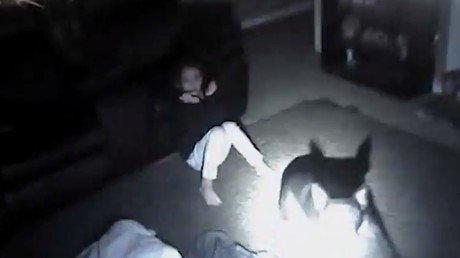Interstellar tidy-up: ISS deploys craft with giant harpoon to collect space junk

A new spacecraft dedicated to cleaning up some of the alarming quantities of space junk – including old satellites and defunct spacecraft – encircling Earth has been launched from the ISS.
There are more than 22,000 pieces of man-made debris larger than 4 inches (10cm) currently being tracked by the US Space Surveillance Network. The RemoveDEBRIS spacecraft will test methods to clean up litter orbiting the Earth – litter which threatens to damage or destroy satellites and manned space missions.
In 2016, a window on the International Space Station (ISS) cracked after being struck with just a tiny fleck of debris.
Just a scratch: 'space debris' left tiny crack in Intl Space Station Cupola window https://t.co/cWg4gX2FiOpic.twitter.com/fFggwbIh60
— RT (@RT_com) May 14, 2016
The (220lb) 100kg RemoveDEBRIS craft is equipped with a big net and harpoon to carry out its clean-up, and also contains a Vision Based Navigation (VBN) system which will use 2D cameras and 3D LIDAR technology to track debris.
The spacecraft was launched into orbit from the ISS last week, after being delivered to the platform back in April on the SpaceX Falcon 9.
Under the project, the device will conduct its first test clean-up mission with the debris-catching net in October, before deploying the VBN system in December. The harpoon, however, won’t be tried out until February.
The net experiment involves deploying a cubesat (a small satellite used for research) from the craft, before then launching the net to catch it. The harpoon test, meanwhile, will fire the spear at a target to see how it captures it.
The debris targeted by the RemoveDebris will deorbit at an accelerated rate, meaning it plunges downwards more quickly than if left to its own devices, and burns up in Earth’s atmosphere.
RemoveDebris also has a drag sail to control its deorbiting process, starting in March 2019. Much like the space junk it’s being sent out to tackle, the spacecraft will burn up as it re-enters Earth’s atmosphere, but by then details of its experiments will have been captured by its cameras and transmitted back to Earth.
Like this story? Share it with a friend!














